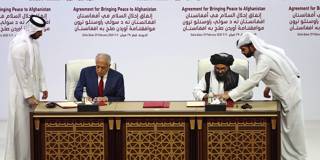After nearly two decades, the United States may at long last extricate itself from Afghanistan, after signing a peace accord with the Taliban. But will the Taliban abide by the agreement, or is US President Donald Trump's deal akin to the "peace with honor" by which America doomed South Vietnam a half-century ago?
NEW YORK – After nearly two decades, 2,400 soldiers killed, another 20,000 wounded, and as much as $2 trillion spent, the United States is understandably eager to withdraw from Afghanistan. President Donald Trump wants to be able to claim in advance of the November 2020 election that he fulfilled his campaign promise to end the country’s longest war, and his Democratic challengers share his desire to extricate the US from the conflict.

NEW YORK – After nearly two decades, 2,400 soldiers killed, another 20,000 wounded, and as much as $2 trillion spent, the United States is understandably eager to withdraw from Afghanistan. President Donald Trump wants to be able to claim in advance of the November 2020 election that he fulfilled his campaign promise to end the country’s longest war, and his Democratic challengers share his desire to extricate the US from the conflict.